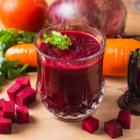We all know that organic vegetables are immensely important for us. But how to eat vegetables if you hate them? How to make your kids eat healthy vegetables? Most people find it hard to add veggies to their diet. Adding veggies not only add colors (to your dish) but also adds in nourishment and health benefits!
Thus, for those who struggle with How to start eating vegetables when you hate them, let’s put it straight, it will be a bit difficult at the start! Indeed, finding ways to incorporate more vegetables into your diet can sometimes feel like a challenge, especially when faced with busy schedules or when you are a picky eater. While picky eating, particularly regarding vegetables, is often associated with children, it’s surprising to learn that many adults also struggle to consume an adequate amount of veggies.
Kids are kids, even adults don’t eat their vegetables properly and that is why most of them suffer from low vegetable intake. According to the statistic approximately only 10% of adults meet the recommended daily intake of vegetables. Including vegetables in the diet is essential for maintaining a healthy lifestyle. Vegetables are packed with essential nutrients, vitamins, and minerals that are beneficial for our overall well-being. Many people need help finding ways to incorporate vegetables into their meals regularly.
However, fulfilling your daily vegetable requirement doesn’t necessarily mean forcing down raw veggies every day. Instead, integrating vegetables into meals alongside your favorite foods or incorporating flavorful herbs and spices during cooking can significantly enhance their appeal.
How to eat vegetables when you hate them?
Hate veggies? But want to incorporate them in your diet? Learn how to eat vegetables when you hate them with our professional and proven ways.
So, let us help you explore some creative and delicious ways to add more vegetables to your diet and reap the numerous health benefits they provide.
Add Veges to Breakfast
One simple way to sneak more vegetables into your diet is by incorporating them into your breakfast routine. Try adding sauteed spinach, mushrooms, bell peppers, or tomatoes to your morning omelet or scramble.

You can also blend leafy greens like spinach or kale into your morning smoothie for an added nutrient boost without compromising on taste. Another option is to top your favorite whole grain toast or avocado toast with sliced cucumbers, cherry tomatoes, or avocado for a refreshing and satisfying start to your day. One more way is to add them in the omelet you eat.
By including vegetables in your breakfast, you set a healthy tone for the rest of the day and increase your overall vegetable intake effortlessly.
Snack Them Raw
Snacking on raw vegetables is a convenient and nutritious way to increase your daily intake. Keep pre-cut vegetables like carrot sticks, celery, cucumber slices, bell pepper strips, or cherry tomatoes in the fridge for quick and easy snacking.
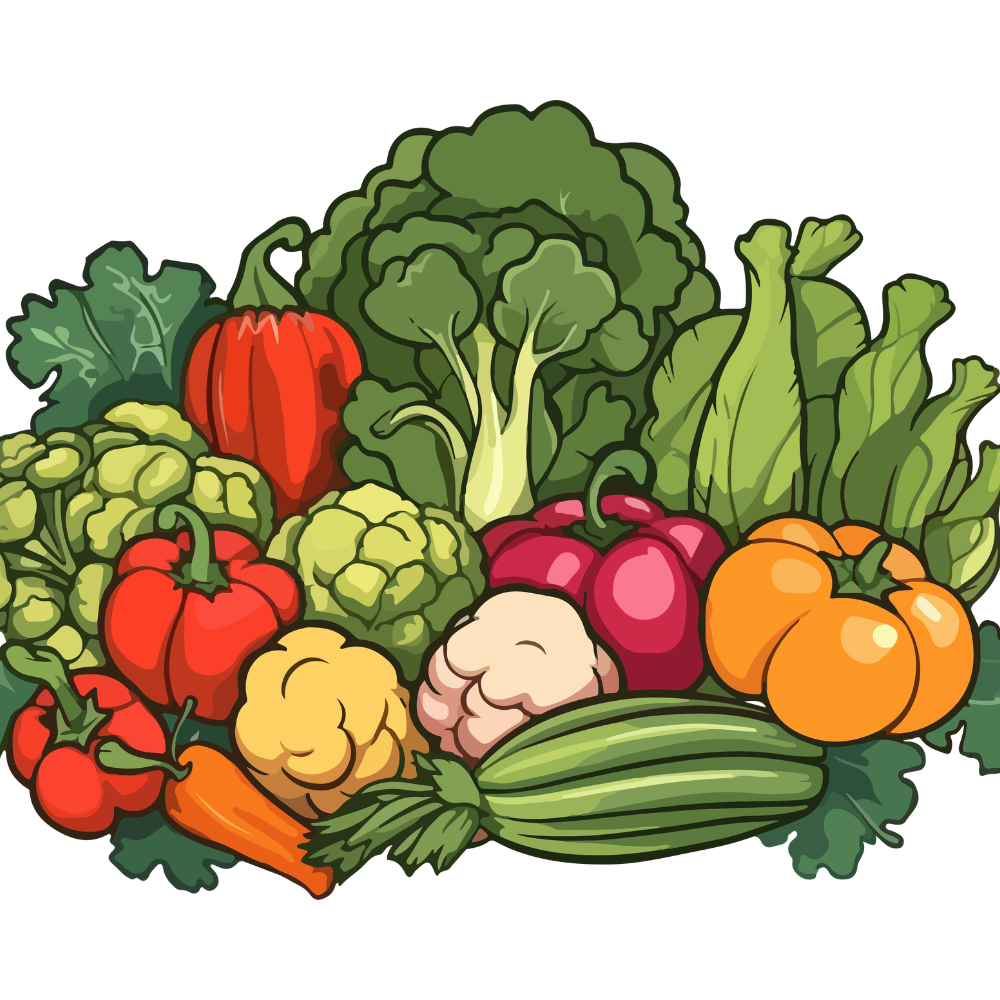
Moreover, you can also try pairing them with hummus, guacamole, or Greek yogurt dip for added flavor and protein. You can also create veggie-packed snack packs by combining a variety of raw vegetables with nuts, seeds, and dried fruits for a satisfying and balanced snack on the go.
Raw vegetables are rich in vitamins, minerals, and fiber, making them an excellent choice for boosting your vegetable consumption and supporting overall health.
Throw Them on the BBQ
Throwing vegetables on the barbecue is a fantastic way to add flavor and variety to your meals while increasing your vegetable intake. Slice vegetables like bell peppers, zucchini, eggplant, mushrooms, onions, and asparagus into thick slices or chunks. Brush them lightly with olive oil and sprinkle with your favorite seasonings such as garlic powder, paprika, or Italian herbs. Grill the vegetables over medium-high heat until they are tender and slightly charred, usually about 5-10 minutes depending on the vegetable.
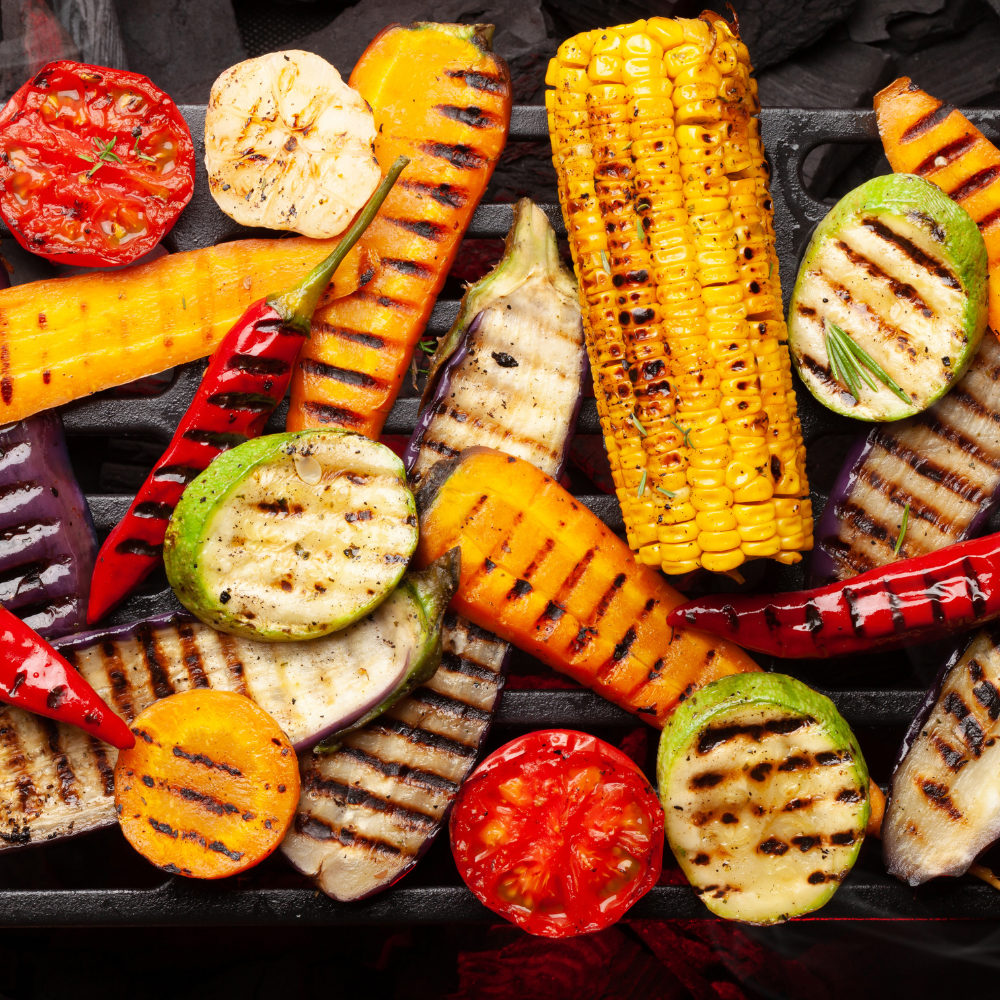
Grilling adds a smoky flavor and caramelizes the natural sugars in the vegetables, making them delicious and irresistible. Serve them as a side dish alongside grilled meats or fish, or chop them up and toss them with cooked pasta or quinoa for a flavorful and nutritious barbecue-inspired salad.
Add Them to Curries
Adding vegetables to curries is a wonderful way to create delicious and nutritious meals. Start by choosing your favorite veggies like carrots, potatoes, and peas. Saute onions, garlic, and ginger in a pot, then add curry spices for a burst of flavor. Mix in the chopped vegetables and let them simmer in coconut milk or tomatoes until tender.

Don’t forget to season to taste with salt, pepper, and a squeeze of lime or lemon juice. Serve your colorful curry over rice or with naan bread for a satisfying meal that’s packed with goodness.
I have even tried to famous Gobi Manchurian and it was a great deal! It was simple to cook, and tasted divine! Cauliflower has a lot of benefits for health and thus can be replaced in our cooking as a prime ingredient!

Blend Veges in Smoothies
Blending vegetables into smoothies is a fantastic way to sneak in extra nutrients without sacrificing taste. Start by selecting your favorite leafy greens like spinach or kale, and add them to your blender along with other vegetables such as carrots, cucumbers, or beets. Next, toss in some fruits like bananas, berries, or mangoes for sweetness and flavor. You can also add a scoop of protein powder or Greek yogurt for an extra protein boost. Finally, pour in your choice of liquid such as water, coconut water, or almond milk, and blend until smooth and creamy.
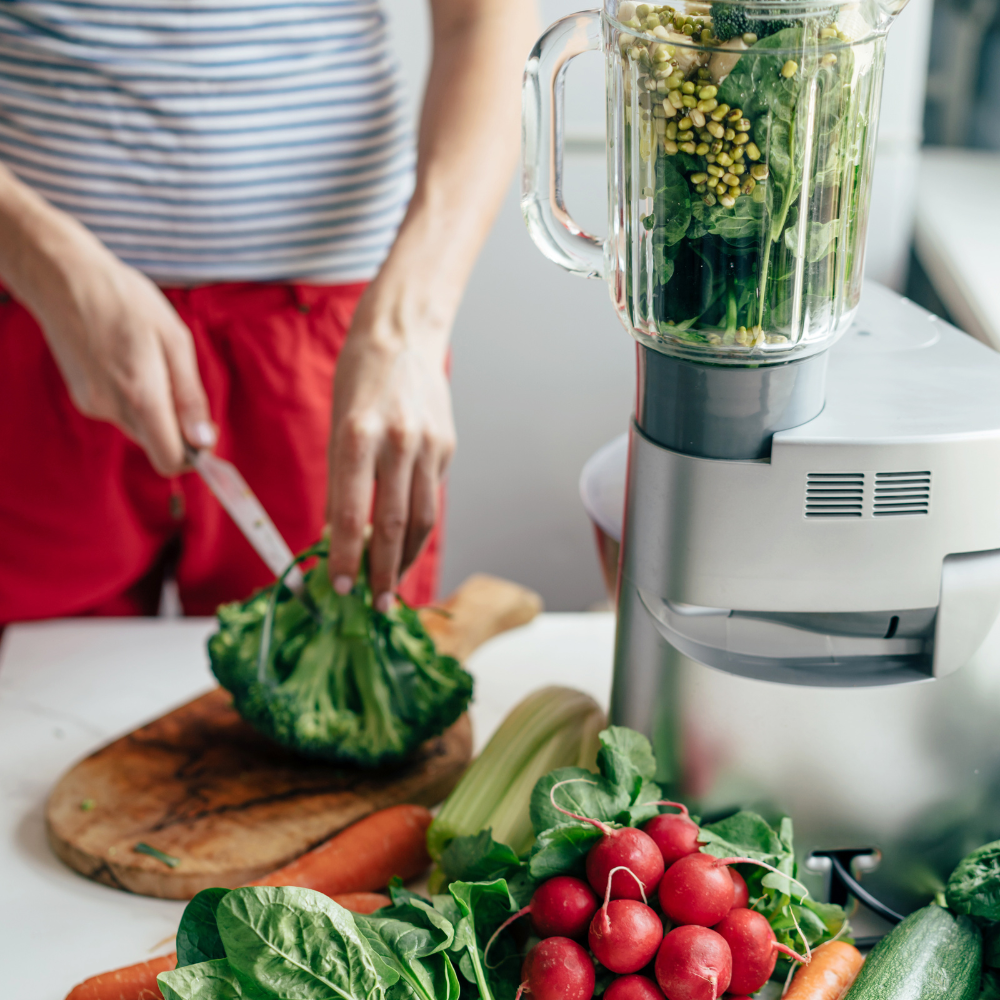
In this way you can enjoy your vegetable-packed smoothie as a refreshing and nutritious snack or meal replacement, knowing that you are nourishing your body with a rainbow of vitamins and minerals.
Shred on Different Dishes
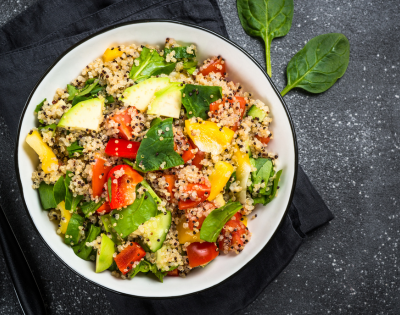
Shredding vegetables and incorporating them into various dishes is a versatile and delicious way to increase your vegetable intake. Consider shredding vegetables like carrots, zucchini, or cabbage to add texture, flavor, and nutrients to your meals.
For example, you can shred carrots and add them to salads for a crunchy and colorful addition. Zucchini can be shredded and mixed into meatballs or burgers to add moisture and nutrients. Shredded cabbage can be used to make coleslaw or added to tacos for a refreshing crunch.
Additionally, you can shred vegetables like potatoes or sweet potatoes to make hash browns or rosti for a tasty breakfast or brunch option. Shredded vegetables can also be incorporated into stir-fries, soups, or frittatas for a nutritious and satisfying meal.
Experiment with different vegetables and dishes to discover new and creative ways to incorporate shredded vegetables into your diet, making it easy to enjoy the health benefits of a variety of vegetables every day.
Add Vegetables to Your Favorite Dishes

Adding vegetables to your favorite dishes is an excellent way to enhance both the flavor and nutritional value of your meals. Whether you are cooking pasta, stir-fries, casseroles, or soups, there are countless opportunities to incorporate vegetables.
For pasta dishes, consider adding diced bell peppers, mushrooms, spinach, or cherry tomatoes to your sauce for extra color and texture. In stir-fries, load up on veggies like broccoli, snap peas, carrots, and bell peppers for a nutritious and satisfying meal.
In casseroles, mix in vegetables like diced zucchini, eggplant, or cauliflower to add bulk and nutrients without compromising flavor. Soups are perfect for incorporating a variety of vegetables such as carrots, celery, onions, and potatoes to create a hearty and comforting meal.
You can also sneak vegetables into dishes like meatloaf, burgers, and meatballs by finely chopping or grating them and mixing them into the meat mixture.
No matter what your favorite dishes are, there is always room to add more vegetables. Not only do they contribute to the overall taste and texture of the dish, but they also provide essential vitamins, minerals, and fiber to support your health and well-being.
Add Vegetables to Sandwiches and Wraps

Adding vegetables to sandwiches or wraps is a simple and tasty way to boost their nutritional value and add vibrant flavors and textures. Start by choosing your favorite vegetables such as lettuce, tomatoes, cucumbers, bell peppers, onions, and avocado. Slice or shred them thinly to ensure they are easy to bite into and won’t overpower the other ingredients.
Layer your vegetables onto your sandwich or wrap along with your choice of protein. You can also add cheese, spreads like pesto or mustard, and fresh herbs to enhance the flavor profile.
For an extra crunch, consider adding sprouts or shredded cabbage. If you are feeling adventurous, you can even pickle some vegetables like carrots or radishes to add a tangy kick.
Once your sandwich or wrap is assembled, enjoy it as a satisfying and nutritious meal that is packed with colorful vegetables and bursting with flavor.
Blend in Sauces
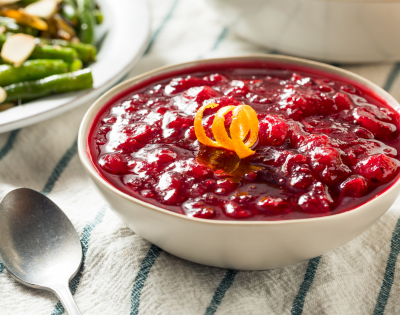
Blending vegetables into sauces is a clever way to infuse them with added nutrition and flavor and without making them obvious. Whether you are making pasta sauce, curry sauce, or marinara sauce, adding vegetables can enhance both the taste and texture.
Start by selecting your favorite vegetables such as tomatoes, bell peppers, carrots, onions, or garlic. Chop them into smaller pieces to facilitate blending. In a blender or food processor, combine the vegetables with other ingredients like herbs, spices, and broth or water. Blend until smooth and creamy.
For pasta sauce, consider blending tomatoes, bell peppers, onions, and garlic with Italian herbs like basil and oregano for a rich and flavorful marinara sauce. If you are making curry sauce, blend onions, tomatoes, ginger, garlic, and spices like cumin, coriander, and turmeric for a fragrant and aromatic base.
Once your sauce is blended, you can use it as a topping for pasta, rice, or vegetables, or as a base for soups, stews, or casseroles. In this way you can sneak in extra nutrients and add depth of flavor to your favorite dishes, making them both delicious and nutritious.
So don’t be afraid to get creative and experiment with different vegetables in your cooking!
Try out the organic fruits and vegetables from Qurban Agro Farms!
Frequently Asked Questions:
How can I eat healthy if I hate vegetables?
If you dislike vegetables, focus on fruits, lean proteins like chicken or fish, whole grains such as brown rice or quinoa, and dairy or dairy alternatives like yogurt or almond milk for a balanced diet.
What to do if someone doesn t like vegetables?
If someone does not like vegetables, there are numerous techniques to make certain they nevertheless keep a healthful eating regimen:
- Explore Different Cooking Methods: Experiment with roasting, grilling, or sautéing veggies to enhance their flavor and texture.
- Incorporate Vegetables into Meals: Hide veggies in dishes like soups, stews, pasta sauces, or smoothies in which their taste is less substantive.
- Try Different Types of Vegetables: Offer lots of veggies to locate ones with greater ideal flavors and textures.
- Focus on Other Nutrient Sources: Emphasize culmination, lean proteins, entire grains, and dairy or dairy options to ensure a balanced weight-reduction plan.
- Consult a Dietitian: Seek advice from a dietitian to create a customized meal plan that meets dietary wishes no matter a dislike for greens.
How to eat vegetables without gagging?
Eating vegetables without soreness may be challenging in case you’re touchy to their taste or texture. Here are a few pointers to make it easier:
- Cook Vegetables: Try cooking veggies rather than eating them raw. Cooking can soften their texture and alter their taste, making them palatable.
- Mix Vegetables with Other Foods: Incorporate greens into dishes you enjoy, like soups, stir-fries, casseroles, or pasta sauces, wherein their taste blends with different flavors.
- Start Small: Begin with small quantities of vegetables and gradually increase as you come to be greater accustomed to their taste and texture.
- Experiment with Seasonings: Use herbs, spices, olive oil, or vinegar to enhance the taste of greens and cause them to be more enjoyable.
- Try Different Preparation Methods: Roasting, grilling, steaming, or even blending greens into smoothies can offer exclusive textures and flavors that may be extra appealing.
- Explore Different Types of Vegetables: Experiment with a whole lot of vegetables to discover ones which you find greater tolerable or even fun.
- Consider Texture Preferences: If texture is an issue, try cutting, slicing, or pureeing greens to modify their texture earlier than cooking or consuming.
- Gradual Exposure: Gradually reveal yourself to vegetables in small amounts over the years to broaden a flavor for them.
Finding ways to include greens into your diet which might be enjoyable and cushty for you is key to reaping their nutritional benefits.
How do I convince myself to eat vegetables?
Convincing yourself to devour greens can be challenging if you do not experience them. Here are some strategies to assist change your mindset and approach:
- Focus on Health Benefits: Remind yourself of the several health benefits of eating greens, such as vitamins, minerals, fiber, and antioxidants that support basic well-being.
- Start with Small Steps: Begin by way of incorporating small quantities of veggies into meals or snacks. Gradually boom portions as you grow to be more familiar with their flavor and texture.
- Experiment with Preparation: Try exclusive cooking strategies (roasting, steaming, sautéing) or seasoning techniques to find methods that make greens extra enjoyable for you.
- Pair Vegetables with Foods You Like: Combine greens with dishes or flavors you already enjoy to make them more palatable. For example, upload vegetables to pasta sauces, stir-fries, or salads with dressings you want.
- Set Realistic Goals: Set conceivable desires for inclusive of greens to your meals. Start with one meal a day or some instances per week, and regularly improve your intake over the years.
- Explore Different Types of Vegetables: Experiment with plenty of greens to find out ones that enchantment on your flavor possibilities and are simpler to be able to eat.
- Educate Yourself: Learn about specific veggies, their flavors, and nutritional advantages. This understanding might help you admire them extra.
- Seek Support: Share your goal of eating greater veggies with buddies, circle of relatives, or a healthcare professional who can provide encouragement and recommendation.
- Keep Trying: It may additionally take time to expand a liking for vegetables. Be patient with yourself and hold attempting new ways of incorporating them into your weight loss plan.
By approaching vegetable intake with patience, creativity, and a focus on the benefits they provide, you can progressively develop a more healthy courting with these crucial meals.
Is it OK to not like vegetables?
It’s okay to not like greens, as everybody’s taste alternatives are specific. However, veggies are a critical a part of a balanced eating regimen because they provide important vitamins, minerals, fiber, and antioxidants that help usual health. If you don’t revel in veggies, it’s critical to locate opportunity ways to ensure you’re getting these nutrients from different meals assets or supplements. Consulting with a healthcare professional or a dietitian assist you to expand a nutrients plan that meets your nutritional options and fitness needs.
How to cook vegetables for someone who hates vegetables?
Cooking greens for a person who dislikes them calls for creativity to cause them to more attractive. Here are a few hints:
- Roasting: Roasting vegetables with olive oil, herbs, and spices can enhance their flavor and texture, making them greater exciting.
- Grilling: Grilling veggies can add a smoky taste that could enchant someone who dislikes their herbal taste.
- Sautéing: Sautéing vegetables with garlic, onions, or soy sauce can add depth of flavor and mask any bitterness.
- Blending: Incorporate vegetables into soups or smoothies in which their taste can be balanced with different components.
- Incorporation: Hide vegetables in dishes including casseroles, pasta sauces, or stir-fries where their flavor may be diluted.


